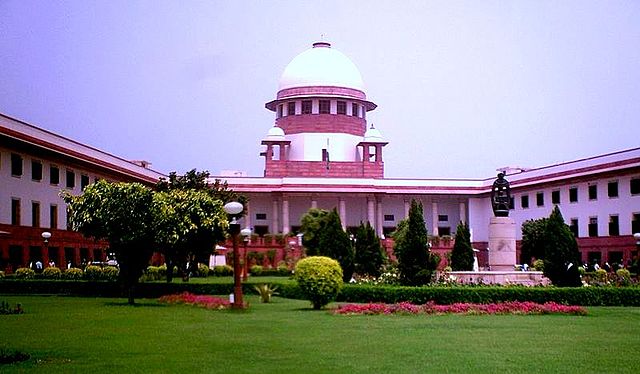By Aman Kumar
The author is a first-year law student at CNLU Patna.
Disclaimer: The views expressed are of the author, LAWOGS in no way endorses the same.

Introduction
The word secularism is derived from Latin word ‘saeculum’ which means century or age. Saeculum was the blasphemous occasion and the period of common historical sequence, as opposed to the revered era. An agonistic Holyoake argues that “secularism is not a disagreement against Christianity” it is the one self-determining of it. George Jacob Holyoake was the one who gave the term secularism. He was an English secularist. He defined secularism on 4 bases:
- No interest in religion anyhow, neither in support of the religion nor in the against of it. Neutral toward religions.
- Believe in this earth or globe only because no one knows what will happen in their next lives.
- Extreme belief in science because science is the one which is going to remove our difficulties and not religions.
- Morality of dharma nirpekshta: Morality is no how related to religion. It is not that if a person is religious, it means it has morality, there may be the difference as well. For example, Bhagat Singh even though he was not religious, he was not immoral as well, he was highly devoted toward the nation. Morality without connecting it to religion.
The concept of secularism is sub-divided into positive and negative secularism as discussed in this blog. A dive into role of judiciary in protecting both of these concepts will provide a better knowledge about Secularism as applied in India.
POSITIVE SECULARISM
The positive secularism that India follows, also called Indian concept of secularism, is related to the term sarva dharma sambav which means equal respect to all religions.
NEGATIVE SECULARISM
Negative secularism is related to the Vedic concept of Dharma Nirapekshta which means indifference of state to all the religions. Most western countries follow this concept where there is complete separation between state and religion. Neither the state nor the religion shall interfere with each other anyhow. Also, the state cannot provide any financial assistance to the educational institution which is being run by religious groups. The classic example is that of France.
JUDICIARY’S ROLE IN PROTECTING POSITIVE SECULARISM
In India, neither in law nor in religion, there is any wall of separation between state and religion. In India, both state and religion can and often interact and intervene in each other’s matters within the legally prescribed parameters. Also, a state tries to promote religious minority groups by providing them incentives. For example, India has legally intervened by enforcing legislation against evil practices of love jihad, sati pratha, child marriages, etc. There is no doubt that India follows positive secularism and the judiciary also tries to promote positive secularism. Judiciary no how tries to impose restrictions on religious matters.
Infact, Judiciary always protects and promotes secularism and we can prove it by saying that Supreme Court declared it as a part of the basic structure of the constitution. The Supreme Court of India has been playing in this area, citing its different verdicts wherever necessary. It further said that it is right that the legislature can amend anything under article 368 of the Indian constitution. But the legislature is not empowered to amend the basic structure of the constitution even with a two-third majority. In the S.R. Bommoi vs Union of India (1994 AIR 1918), the Supreme Court dwelt at length on the basic feature of secularism in the constitution and justified the proclamations under article 356 imposing President’s rule in states in the aftermath of Babri Masjid demolition on the ground of threat to ‘secularism’ which held it held to be a basic feature of the constitution and one that was there even before word ‘secular’ was inserted in the preamble by the 42nd amendment. In this, the court held that emergency imposed was unconstitutional because secularism is part of the basic structure of the constitution and if any state does not follow secularism which is in favor of center, then the state violating secularism will face article 356 and in such case, imposition of article 356 will be constitutional. Supreme Court every time tried to interpret secularism in its own ways. Supreme Court in this area playing tentatively and citing verdicts that are necessary. Court held that secularism does not mean that the state should stay aloof or uninvolved in religion but that it should give equal treatment to all the religions.
In Ziyauddin Burhammudin Bukhari Vs. Brijmohan Ramdass Mehra and Bros. (1975 AIR 1778, 1975 SCR 453) court held that the secular state, rising above all differences of religion, attempts to secure the good of all its citizens irrespective of their religious beliefs and practices. It also held that states should ensure that what the duty states are falling under the law, not under the pressure of particular religion. Anything that is harming cannot be permitted to remain outside the preview of the law.
In the Ayodhya case (AIR 1995 SC 605), court held that the constitution guarantees equality in the matter of religion to every person that is empowered in the fundamental right of the Indian constitution from articles 25 to 28. In the constitutional scheme, a creed adopted by the Indian people has to be understood while examining the constitutional validity of any legislation on the touchstone of the constitution.
JUDICIARY’S ROLE IN PROTECTING NEGATIVE SECULARISM
India does not or never promote negative secularism as everyone has the right to practice their religion. Judiciary also never promotes negative secularism but, in some cases, the judiciary has kept constitutional morality at the top. In some cases, Supreme Court has said that it would not give priority to the status of the religions. We believe what is granted in the constitution and that is constitutional morality. In some cases, SC has given priority to constitutional morality instead of religious morality and made sure that India is a country of rule of law and if religions behave in such a way that it snatches the status of rights and equality then they are empowered to regulate religions.
In Mohd. Ahmed Khan vs Shah Bano Begum and Ors (1985 AIR 945, 1985 SCR (3) 844), in Shayara Bano vs Union Of India And Ors. (AIR 2017 9 SCC 1 (SC)) etc, court held that personal religions most of the time may violate the constitutional rights of an individual and in such a case, there should be more priority to constitutional rights as compared to religious rights.
In Afzal Ansari and 2 Others vs State Of U.P, on 15 May 2020 the court held, that recital of Azan is an integral part of the Islamic religion. The Allahabad High Court on Friday allowed the Muezzins of various mosques to practice Azan, but using microphone or loudspeaker to recite is not a part of the religion and violates the rights of the others, therefore, microphone or loudspeaker should not be used to recite it.
Mohd. Hanif Quareshi & Others vs The State Of Bihar (1958 AIR 731, 1959 SCR 629), in this petitioner claimed that the slaughter of cow on the occasion of Bakrid is an essential part of the religion and therefore should be allowed to practice. The Court held that the slaughter of animals may be an essential part of the religion but that animal will be cow is not an essential part of the religion.
Therefore, India follows the positive secularism, declares that the constitution of India will be prior to follow.
CONCLUSION
As we know that India is a diverse country different people follow different religion and to ensure that every religion is protected, the judiciary plays an important role. Also, the Constitution of India empowers individuals to enjoy secularism and if violated, the judiciary will be the greatest protector. Articles 14, 15, 16, 23, 25 to 28, 29, and 30 of Fundamental Rights prevents discrimination on the basis of religion. It is not necessary to distance the state from all religions, rather the state should live in harmony with all religions. Indian secularism model is different from the western model because the western model keeps state and religion away from each other while the Indian model keeps both on the same pace or tries to connect them. Also, Indian model provides special privilege to those who are not at the same pace and therefore empowers them to live with equality. What to do when something is beyond the legality of the private law/religion, then court will decided by the constitution, not by the religion. For Example, i, where adoption of a child is invalid in personal law and a person wants to adopt a child will be decided by the constitution, not by the religion. Secularism is not just a word, it is an idea that was supported by the founding father of Independent India and constructer of India’s constitution. It refers to several procedures and values related to the way of a diverse society and its state should be prepared. Restriction can be imposed on public interest, for protection of rights, in the context of reformation of the society, etc, and established a doctrine that under religious freedom any religion can claim superiority only on those parts which are an essential part of that religion. That is known as the ‘doctrine of essentiality’. For example, if individual claims that as their religion says that bigamy should be practiced, they should be allowed and the constitution completely denies it then in such a case, bigamy will not be allowed as it is not an essential part of the religion and also violates Indian constitution.

